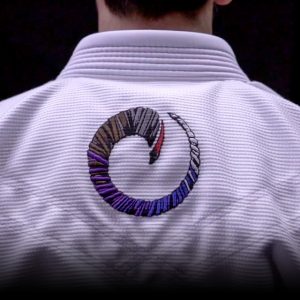How you can break through to the next level.
By Eric Davis
Do you use any visualization or mental practice in your training? Training for Thai Boxing, boxing, Shooting, Jiu-Jitsu, Judo, wrestling, football….do you have a practice specifically used to enhance your skill from a thoroughly mental game perspective? If the answer is no, you may be losing out on a priceless tool for improvement, arguably the most important. In point of fact, it is what separates the “good” from the elite in essentially all sports, professions, and skills. The main discussion in this short piece is on visualization but I take the liberty to discuss general mental tools since they are absolutely germane. In addition, we will have follow up articles on the supplementary concepts discussed.
Visualization….
Let me pause a moment and plug two pivotal Evolution Security Podcasts where the mental game was discussed at length. The links will be provided in the references below the article.
Episode 14 with Mike Seeklander: Mike is a professional shooter, the 2019 International Defense Pistol Association (IDPA) World Champion and is a United States Practical Shooting Association (USPSA) Grandmaster with multiple national and international titles. In that show there is a master class discussion on visualization.
Episode 5 with Mike Brown, a world champion Jiu-Jitsu Black Belt, a Division I wrestler at Cornell and a National Champion IDPA shooter. Mike talks about how crucial visualization can be to success, “yet people will not typically do it, even though the only thing it costs them is time.” Driving this home further, Olympic Gold medalist rifle shooter and world-renowned performance coach Lanny Bassham states in reference to interviewing “Hundreds of Olympic athletes and PGA Tour Pros… What percentage of what you do is mental? They have all answered at least 90 percent.” Then he follows up with a second question, “What percentage of your time and money do you spend on training the mental game? The answers are always similar: very little or less than ten percent.”
So if mental game is 90% of what Olympians believe to be part of their success, I myself am curious as to why their practice of mental preparation is so low? This subject may be a research project for another article. We may not all aspire to be Olympians, however we should all endeavor to include some form of self-mental coaching and visualization in our training. Especially as tacticians and people serious about sell-protection, and more importantly, the protection of our loved ones. Furthermore, if you are a competitor in any sport or activity, you will be able to use these tools in competition to assist in a winning performance. Regardless of whether or not you are a top competitor or just simply trying to win your division in a local match or make the podium at a local Jiu-Jitsu tournament you can use these methods to take you to the next level.
With the COVID 19 draconian lockdown orders in place all of us can get copious amounts of visualization and/or mental practice time. Visualization is the easiest mental tool to start developing; as you are reading this, you can stop and envision performing extremely well in your sport or activity. Try it for a moment…… see it’s not too difficult. It doesn’t have to be perfect to be beneficial, you just have to start. And like any other skill, you will get better over time.
As my primary pistol coach over the years, Mike Brown has quoted Lanny Bassham to me countless times in private lessons. One of the quotes has impacted me greatly, “Your subconscious mind cannot tell the difference between fantasy and reality.” Mike also assigned reading Lanny Bassham’s book, With Winning in Mind and instructed me how to use his protocols to achieve Master Class in IDPA in a short period of time. Essentially, I used both visualization and affirmation statements to help build my self-image to the level of my conscious and subconscious skills. I do not make that statement to be boastful, I simply provide it as an example of the efficacy of these methods in my life. Moreover, I am currently using the protocols for some big goals in my Jiu-Jitsu, and will continue to use them anytime I want to effect change in my journey.
Don’t just go through the motions when executing solo Jiu-Jitsu drills. Visualize retaining guard against your favorite black belt superstar, or the toughest person at your gym. This may seem like a conceited or arrogant approach, it is not. This is simply a way to give your brain a repetition in doing something correctly in a novel situation, making it not so novel.
You have likely heard the term or descriptor of someone being a voracious reader. Be a voracious viewer of Jiu-Jitsu videos or whatever your sport or skill. When you see something on video, your brain partially sees it as your own repetition. The two modalities of using video and visualization are close cousins. After you watch a technique on video, immediately visualize doing it yourself, this can give you double the mental repetition. Research shows that visualization does in fact build neuro pathways similar to the physical action itself, why not add it to our training.
So, how do I remind myself to practice visualization? Well, I put reminders on post-it notes and reminders on my phone. The post-it notes read: “Visualize a winning performance on an IDPA match stage.” Or….”Visualize winning the finals Jiu-Jitsu match at Master Worlds.” If possible, this should include as many of your sensory inputs as possible. Try to vividly see the thing happening, feel the emotion, try to smell the venue. The practice doesn’t have to be long, just commit to one visualized scenario and go through it once or twice, spend 30 seconds or a minute max and move on. This will pay dividends. Better yet, if you can sit down and do it for 3 minutes, you will achieve exponential progress.
For IDPA or USPSA matches, make sure when you are preparing for a stage, actually prepare. Watch what the successful shooters are doing, analyze quickly if you believe there could be a more efficient method of shooting the stage, and then choose your plan. Then start slow, visualize stepping through the stage methodically but at each point visualize a perfect sight picture and a perfect shot for the number of rounds prescribed for the stage. You should progressively build up to match speed without mistakes. To use Mike Brown’s verbiage, it should look like a first-person shooter video game as a mental descriptor. Mike Seeklander states in Episode 14, “I work the match, I don’t shoot the match….I am not just smoking and joking, I am working the entire time.” He also states that once he has his plan for a stage, he visualizes it over and over again until he shoots the stage for real. When he said that in the interview a light bulb went off, I realized “Man, I have not been visualizing enough!”
Substantially more critical than doing better in a pistol match or doing better in a Jiu-Jitsu tournament is winning in a life or death encounter. Drawing on a recommendation from our great mentor Psychologist Dr. William Aprill of Aprill Risk Consulting, you can use visualization to help you prepare for this as well. He suggests reading the news, finding stories on criminal assaults or successful defense stories to provide subjects for your visualization. In addition, we have video. We live in one of the best times in history regarding the availability of video for self-defense education and training. Cell phone cameras are ubiquitous and more and more law enforcement agencies require body cameras. We can certainly debate on rather both of these realities are ultimately good. One thing is self-evident; the availability of video of criminal assault or good guys fighting and winning is a vital tool for us. Dr. Aprill states that “The brain cannot tell the difference between real and faux stress.” As with Force on Force training, the more we are stress inoculated the calmer we will be in facing the real thing. As stated previously, you just achieved a repetition yourself. We can combine these two methods to get greater results. The same visualization used to aid in our shooting skills and our Jiu-Jitsu can provide our minds with a “parking place” to use Dr. Aprill’s phrase, for a valid response to a threat. Simply go to YouTube and search for shootings, fights, and assaults so on so forth, and find hours of examples. A great source is John Correia’s Active Self Protection channel on YouTube where he provides excellent analysis and tips. Simply start the habit of reading the paper and watching videos with the above mentioned philosophy in mind. You very well may enable yourself with the critical response that you need to go home to your family or to save someone you love.
References and Links below for Evolution Security Podcasts dealing with this subject from the Experts.
Mike Seeklander’s websites:
https://www.shooting-performance.com/ and https://americanwarriorsociety.com/
Lanny Bassham’s book With Winning in Mind
To purchase a signed copy go to: https://www.mentalmanagementstore.com/
To purchase from Amazon: With Winning in Mind: The Mental Management System
John Correia’s Active Self Protection Channel
Dr. William Aprill and Aprill Risk Consulting: https://aprillriskconsulting.com/



Recent Comments